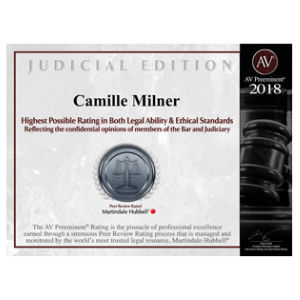What is really in the “best interest” of the children?

I spent last week in New Orleans at the State Bar of Texas/American Academy of Matrimonial Lawyers seminar on “Breaking Boundaries in Custody Litigation.” As someone who has embraced Collaborative Divorce and non-adversarial conflict resolution for families, it might seem curious why I would go to a course that even has “litigation” in the name. But I knew that the topic was about the science of 50/50 shared parenting time between divorced parents, and that is not a topic that is limited to litigation or the courtroom.
In Texas, the Courts are required to do what is in the “best interest” of the children. When I started practicing law, the presumption was that best interest of the children required one parent to be named the “managing conservator” and one the “possessory conservator,” which basically meant that the managing conservator was primary, made the decisions for the child and had the child most of the time, and the other parent “visited” with the child, like some distant relative, not a parent.
I was always offended by that. As the fathers in my family had been very involved parents for generations and I felt instinctively that was better for children. Eventually, the “presumption” of “best interest,” of the children was changed by the legislature to “joint conservators.” That was a huge step, BUT it was really only in name.
The parents, the children and society knew by the name that the parents were “joint.” That was important, but the reality was that in most cases, the visitation was still the old Standard Possession Order. In which, one parent, typically mom, has the child most of the time. Then the other parent, typically the dad, has “visitation” (now the politically correct term is “parenting time”) the 1st, 3rd and 5th weekends of every month and one night a week, usually for dinner.
I have always worried, “Is there any science out there that would say I am doing the children in these cases a disservice; is this arrangement in any way harming the children more than helping them?”
Truth be told, when you look at the non-sleeping, non-school time versus the time that the parents actually get to be with their children, standard possession ends up being about 53%/47% rather than as drastic as it is usually interpreted by the parent NOT having the children most of the time.
Despite getting grief from many of my colleagues who argued that the Standard Possession Order meant less problems because it was legislatively endorsed, I have almost always drafted the decree around the family’s schedule and wishes, which often meant closer to a 50/50 split parenting time. Still, I have always worried, “Is there any science out there that would say I am doing the children in these cases a disservice; is this arrangement in any way harming the children more than helping them?”
I am pleased to say that, after hearing the multi-judge and psychologist panel and hearing the science on this issue, the reviews are still mixed, but there is nothing that says I have been an accomplice to hurting kids! In fact, a poll was taken of the audience of attendees and their opinions were as mixed as the judges’ and psychologists’.
What we DID take away from the studies is that when parents work together and keep the interests of their children as their top priority, all arrangements work better, and if the parents agree to a 50/50 split or something close to that, the very best guarantee for the children to thrive is by the parents cooperating and working together. This article, written by a parent, beautifully articulates how to do just that.











